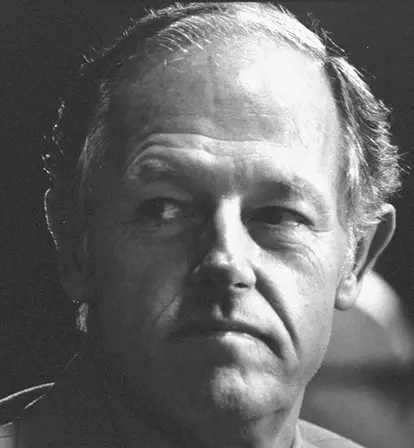For Watergate ringleader E. Howard Hunt, the crimes he committed on behalf of Richard Nixon pale in comparison to the crimes he committed on behalf of his country.
Saint John Hunt, the eldest son of “retired” C.I.A. agent E. Howard Hunt Jr., had spent most of his adult life running from his father’s legacy. In 1972, not long after the Watergate break-ins, Hunt woke his son up in the middle of the night to enlist his help in wiping fingerprints off listening devices.
By the end of the year, the 18-year-old Saint, named for one of his father’s many pen-names, was alone with his younger brother, their father was serving a federal sentence, and their mother was dead in a bizarre airplane crash at the height of the Watergate Scandal.
Even after Hunt’s release, father and son had little time for each other. Saint spent much of the next two decades using and dealing hard drugs, mostly meth, and drifting around the country. However, there were questions he always wanted to ask his father, the same one’s Hunt had been asked by congress during the House Select Committee on Assassinations in the late 1970s.
In 2003, he approached the nearly blind, wheelchair-bound, 84-year-old ex-spy, and asked him for the truth: “Who killed President John F. Kennedy?” E. Howard Hunt asked for a bottle of Diet Root Beer, a pen, and some paper, and began drawing a diagram.
The Early Years And Career Of E. Howard Hunt
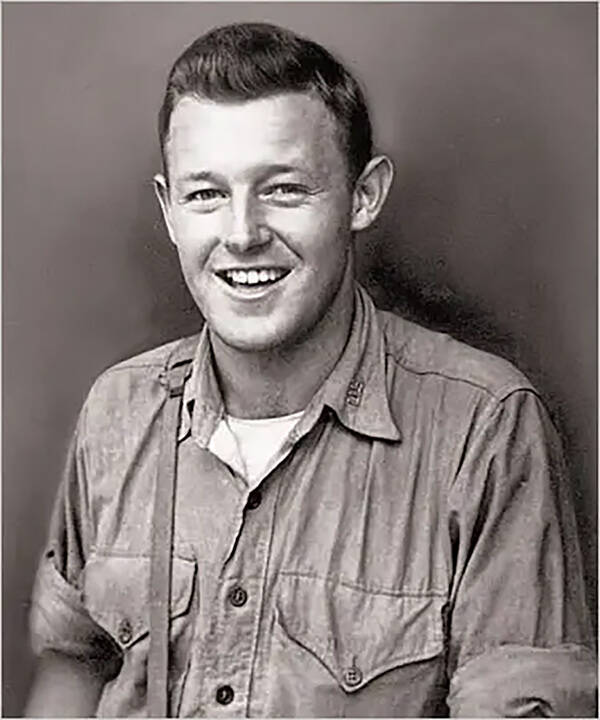
Courtesy of American SpyE. Howard Hunt as a young man.
Everette Howard Hunt, Jr. was born in New York on Oct. 9, 1918. His father was a successful lawyer and lobbyist in state politics, affording the younger Hunt some semblance of an upper-class lifestyle, including an Ivy League education at Brown University.
With the outbreak of World War II, the newly graduated Hunt enlisted in the Navy in May 1941 and was posted off the coast of England to ward off the threat of German invasion. Nine months later, Hunt was back in Boston in a Naval War hospital after slipping and falling on an icy deck and was subsequently honorably discharged.
In 1943, Hunt was listed [PDF] in Who’s Who as a movie scriptwriter, a magazine editor, and a war correspondent for Life magazine. That same year, he would release his first novel, East of Farewell, which the New York Times called “the best sea story of the war” and “a crashing start for a new writer.”
Later that year, Hunt returned to military service, this time with the newly created U.S. Army Air Corps (U.S.A.A.C.), where he would officially serve until 1946. According to most astute observers, however, the U.S.A.A.C. was a cover story for Hunt’s real wartime service: the Office of Strategic Services (O.S.S.).
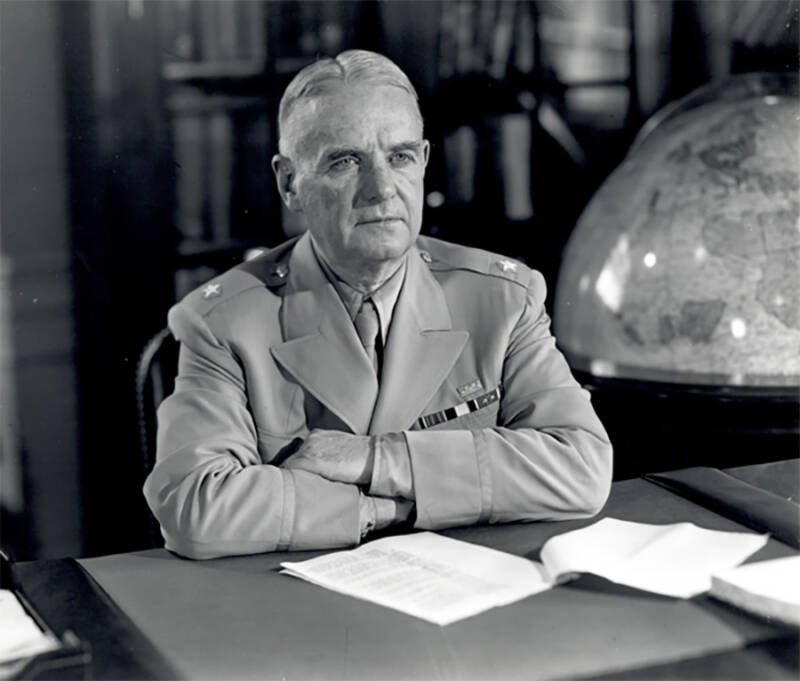
National ArchivesWilliam Joseph “Wild Bill” Donovan, Head of the O.S.S. c. 1945.
Created under William “Wild Bill” Donovan, the O.S.S. had been created to be the American answer to the British MI6 intelligence service, replacing the previously uncoordinated system that saw the Departments of Treasury, State, War, and the Navy all operating their own intelligence-gathering units.
With Donovan as “Coordinator of Information”, the O.S.S. collected information on Axis movements, trained insurgents to fight behind enemy lines and even began spying on Soviet forces toward the end of 1944 in what would become the prelude to the Cold War.
How Hunt became involved with the O.S.S., apparently at Donovan’s request, has been a subject of speculation. Various authors have cited pressure placed on Donovan by Hunt’s father, as well as donations made to Donovan affiliates in the New York area as having helped Hunt’s entrance into spycraft.
Short-Lived Successes And The End Of Civility
Two weeks after the bombings of Hiroshima and Nagasaki, President Harry Truman ordered the dissolution of the O.S.S., officially ceasing operations in September 1945. E. Howard Hunt returned to civilian life in 1946, but if his semi-autobiographical novel from that year, A Stranger In Town is any barometer, it was not an easy adjustment.
Centered around a newly-returned World War II veteran who misses the meaning and violence of war once back in the comforts of home, Hunt’s narrator at one point laments: “They trained me to be a killer… Now they’ll have to undo it.”
A Stranger In Town would win Hunt the 1946 Guggenheim Fellowship for Fiction, beating competition like Gore Vidal and Truman Capote. According to Vidal, Hunt used the fellowship money to travel to Mexico for a year and learn Spanish, a skill he would put to good use.
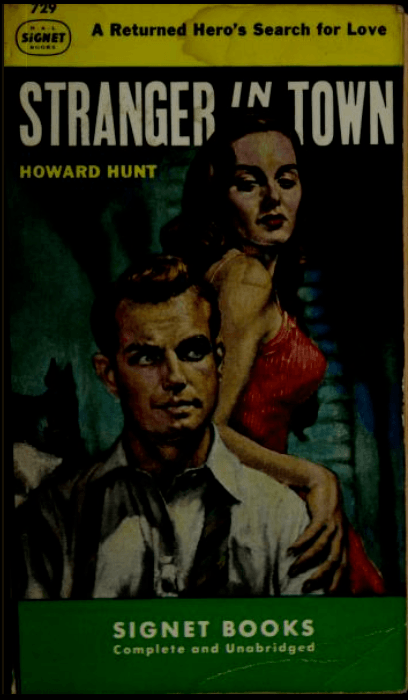
Archive.orgCover of “A Stranger in Town”, Signet Paperback Edition.
Whatever joy this early praise may have brought him, the critics turned against Hunt in 1949 with the release of his book, Bimini Run. That same year, Hunt would officially return to the U.S. intelligence services but others argue he never really left.
For instance, in 1975, the Rockefeller Commission on C.I.A. Activities In the United States spent time examining Bimini Run‘s protagonist “Hank Sturgis” for being suspiciously similar to Hunt’s Watergate and C.I.A. comrade, Frank Sturgis, a man he would not officially meet for another two years.
It seems possible Hunt’s spy work may have restarted in 1948, during his tenure in Paris nominally working for the U.S. Government counsel office. During this time, Hunt met his wife Dorothy who was working as a secretary for a high-ranking C.I.A. member in disguise.
According to Saint John Hunt, his parents were spies when they met but, officially, it was not until the two married and returned to the United States that Hunt was hired by the C.I.A.
A Spy Master In Mexico City
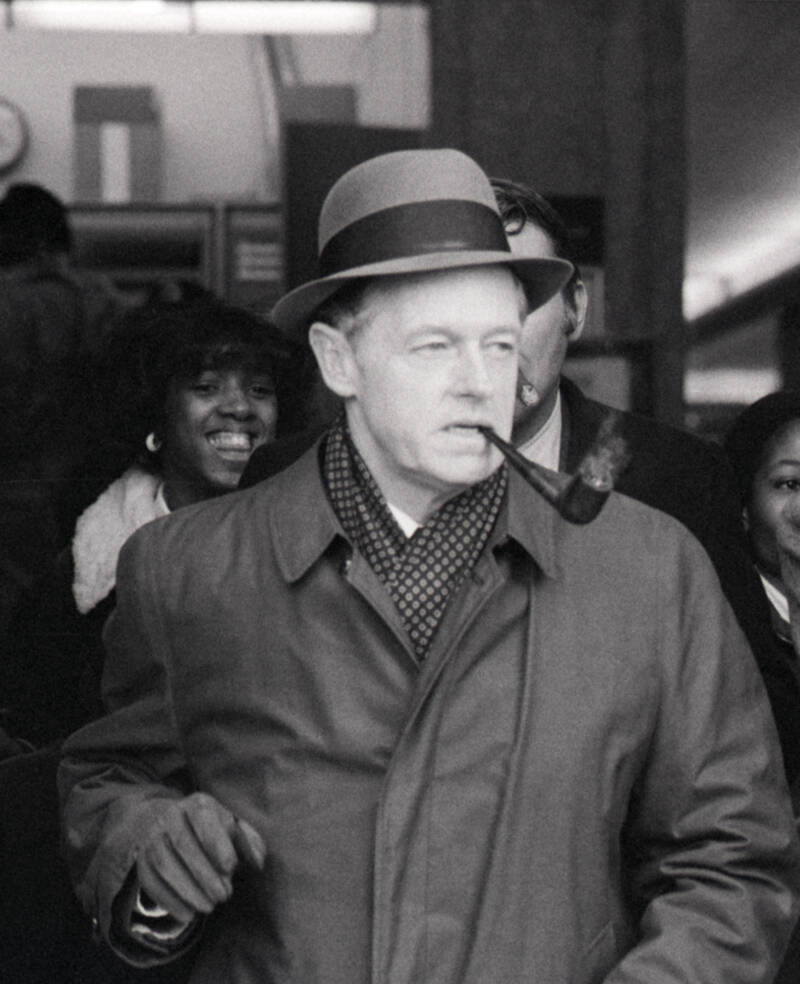
Bettmann/Getty ImagesE. Howard Hunt leaving the courthouse at the conclusion of the third day of the Watergate trial. Jan. 1, 1973
In the agency’s early days, the C.I.A. shared more similarities with a fraternity than an intelligence service. New inductees were ritually “sworn in” with a knife and a Masonic trowel, apparently as a nod to the new director, Allan Dulles’ undergraduate participation in Yale’s Skull and Bones Society.
The men who caught Dulles’ eye and attention rose fastest in the organization, enjoying expensive lunches and golfing trips around Washington D.C. and reporting to the highest offices of power. It says something about Hunt, then, that by 1951, he was the C.I.A. station chief in Mexico City, and would spend most of the next decade outside the country.
In Mexico, Hunt’s main tasks were two-fold – to hire and train new promising recruits for the agency and to oversee and organize field operations throughout Central America. From what we know, Hunt had a major success in each category.
In 1952, he recruited the young William F. Buckley Jr. [PDF], later a famous conservative author and pundit, who would become Hunt’s lifelong friend and the godfather of several of his children.
In 1951, Guatemala saw the election of Jacobo Arbenz as the president of the Central American nation on a populist, socialist platform. Expanding on previous land-reform policies following the Guatemalan Revolution of 1944, Arbenz proposed the acquisition of privately held uncultivated land for the redistribution to poor farmers.
In particular, this angered the United Fruit Company whose holdings were directly threatened. Thanks to the company’s ties to the White House and the C.I.A., they ensured this never came to pass. Hunt was tasked with creating what he later called a “terror campaign”, designed to shock Arbenz and his military into submission before U.S.-backed rebel forces.
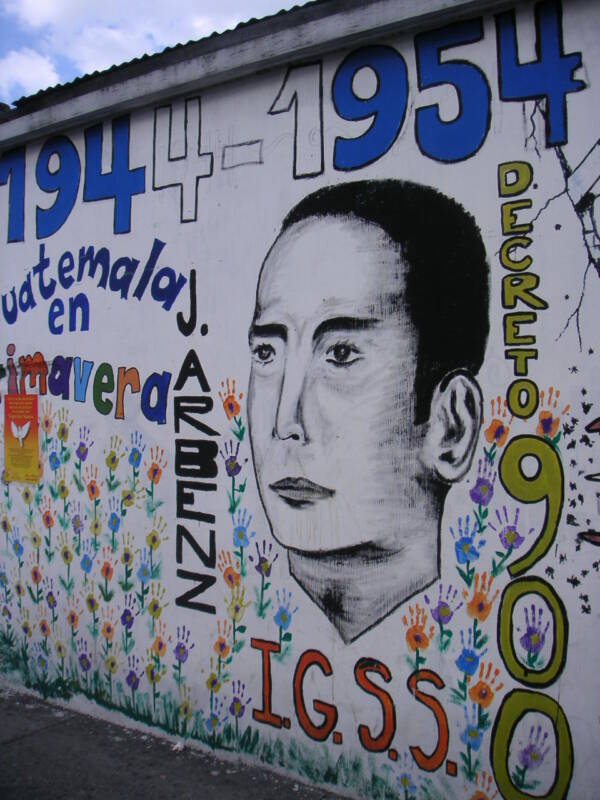
Wikimedia CommonsA mural in Guatemala celebrates the “ten years of spring” and the presidency of Jacobo Arbenz, who passed important agrarian reforms in the country. Unfortunately, it also angered the United Fruit Company in the United States, who pushed the U.S. government to overthrow Arbenz.
In addition to training nearly 500 men under future Guatemalan dictator Carlos Armas, Hunt oversaw a propaganda campaign involving fake radio transmissions, leaflet drops, and other psychological operations coordinated with a naval blockade and air bombardment of the capital by U.S. forces. The coup succeeded, bringing the “ten years of spring” to an end in 1954 and ushering in 40 years of bloody struggle in the region.
Hunt, for his part, was quickly moved to new areas, serving as a station chief in Uruguay and later as a “counsel” in Japan. The records of Hunt’s exact activities remain classified, but there is room for speculation about what he did during this time. For instance, it is known that the C.I.A. picked every Japanese Prime Minister from the restart of elections after World War II to the mid-1970s, something in which Hunt was almost certainly involved.
The Bay Of Pigs: Fought In Cuba, Lost In Washington?
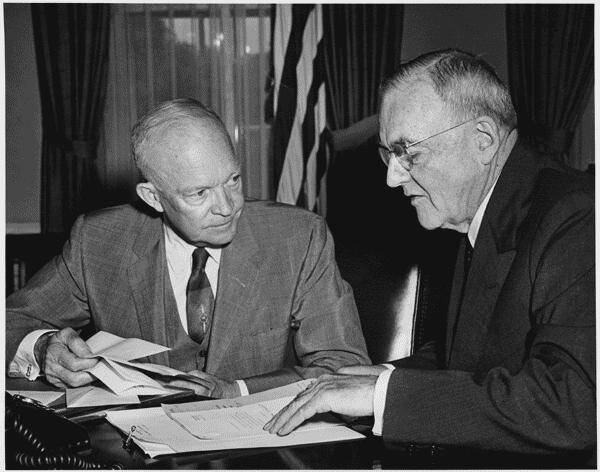
Wikimedia Commons.President Dwight Eisenhower meets with Secretary of State John Foster Dulles in 1956. John Dulles’s brother, C.I.A. director Allen Dulles, who would be instrumental in launching the failed “Bay of Pigs” invasion of Cuba in 1961.
In the late 1950s, Hunt was splitting his time between the Washington D.C. area and Miami, Florida, working as an assistant to Allan Dulles and participating in the preparations for what would become “The Bay of Pigs”.
In 1959, Fidel Castro’s communist forces took control of the island nation of Cuba, 90 miles south of the Florida coast, becoming what Hunt would later call “a dagger aimed at the heart” of the United States in terms of Cold War geopolitics.
Drawing men from the most strongly anti-Castro elements in the Miami ex-pat community, Hunt developed a militia that began a months-long regimen of military tactic and weapons training courtesy of the U.S. Government. Coordinating with the American military’s fighter planes and warships, this force would be the first step to taking back Cuba from Castro.
Or, at least, that was what the Eisenhower Administration and Vice President, and Republican presidential candidate, Richard Nixon hoped.
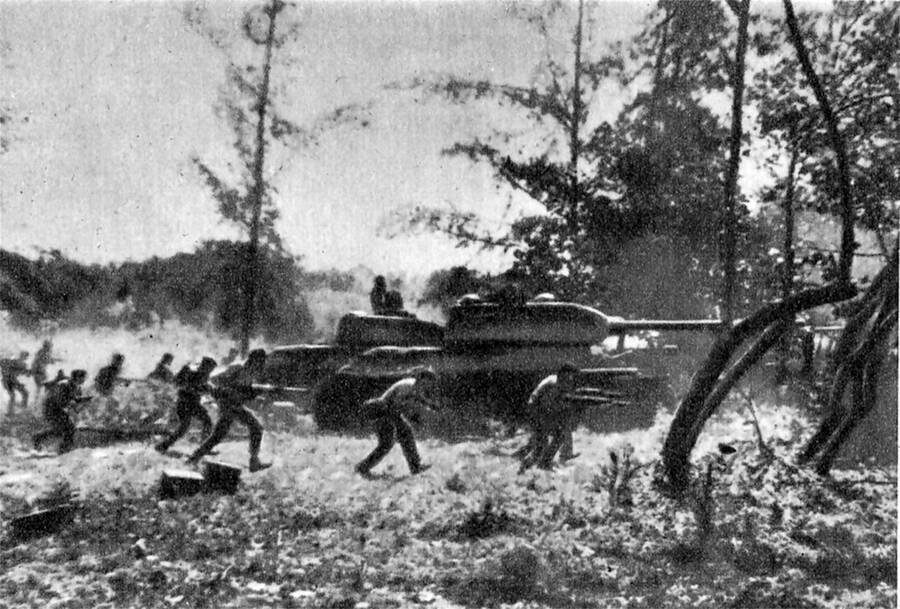
Wikimedia Commons.Photograph of anti-Castro forces landing at the Bay of Pigs, 1961.
Instead, in 1960, John F. Kennedy defeated Nixon for the presidency. Concerned American involvement would be too obvious, Kennedy reduced the number of planes and ships made available. Hunt later claimed a planned 48 bombing runs ended up being only 8 during the invasion.
Kennedy also moved the landing beach to the other side of the island, increasing the difficulty of reinforcing or resupplying their ground troops and reducing the air cover American planes could provide [PDF].
Thanks, in part, to these changes, most of Hunt’s highly trained Cuban forces died within an hour of landing on the island. The White House laid the blame on the C.I.A., Allan Dulles was fired, and Hunt was reassigned. Nominally tasked with writing spy novels to improve public perceptions of espionage, Hunt felt his C.I.A. career died in Cuba.
A “Fresh” Start?
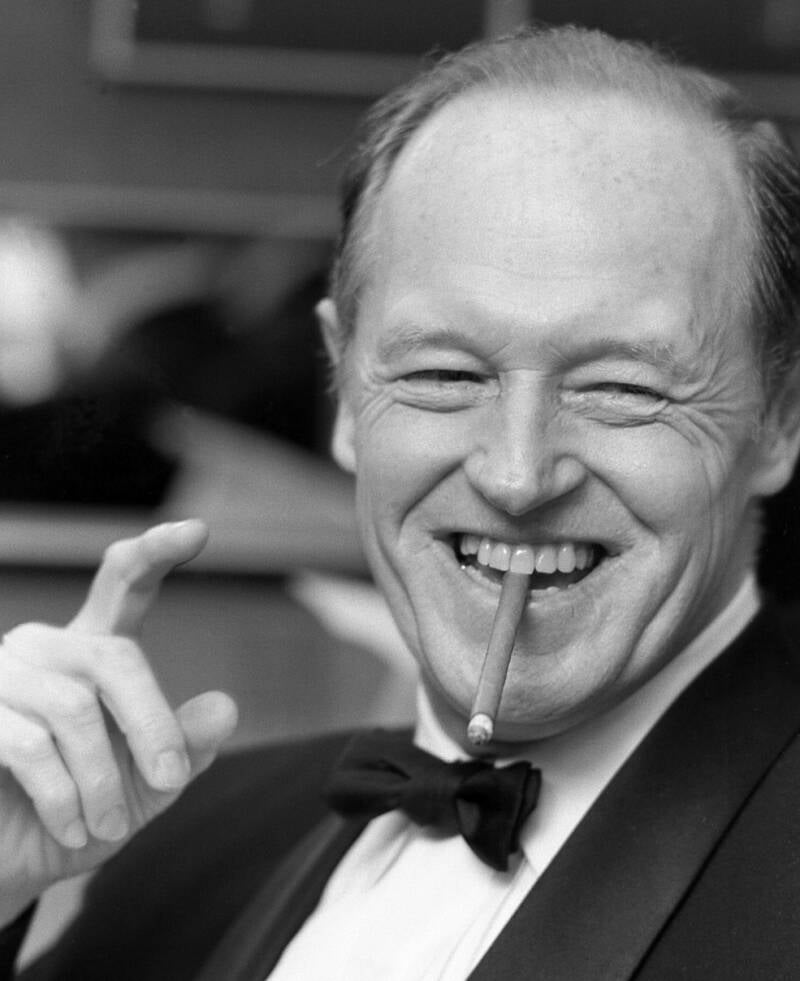
Patrick Partington/Getty ImagesE. Howard Hunt smokes and smiles broadly during a gallery opening of his work, Palm Beach, Florida, 1978.
According to the F.B.I., Hunt’s transition into civilian service—such that it can be said to exist—happened like this: In 1970, Robert Mullen, C.E.O. of R.E. Mullen & Co., a Washington PR firm, got a call from a contact at the C.I.A. asking if he could hire a retiring agent. Because C.I.A. agents can’t talk about past work experience, it was the kind of call Mullen had received before.
Mullen hired Hunt, tasking him with writing educational television shorts for “gifted and retarded children”, but it did not last. Although Hunt later claimed he was still employed by Mullen in 1972, by Mullen’s account to the F.B.I., he left sometime in 1971, and his former boss could not remember when or why.
Tellingly, this was during the same time that, through the Brown University Alumni Club of Washington D.C., Hunt met Charles Colson, special counsel to the new Nixon White House. Colson, also known as Nixon’s “hatchet man”, soon had Hunt working for 100 dollars a day for the White House Special Investigations Unit.
Shortly after beginning work for the White House, Hunt requested a red wig, fake ID, and voice disguiser from the C.I.A. headquarters and broke into the office of Pentagon Papers whistleblower Daniel Ellsberg’ psychiatrist.
Watergate and Worse Conspiracies:
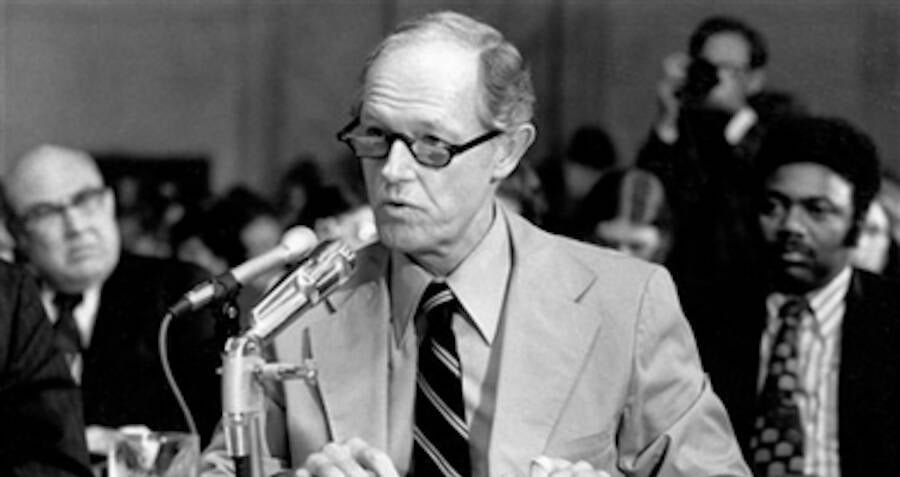
Wikimedia Commons.Hunt testifies before Congress, 1973.
In his 1965 novel, On Hazardous Duty, Hunt’s narrator opines: “We become lawless in a struggle for the rule of law — semi-outlaws who risk their lives to put down the savagery of others.” In many ways, there could not be a more perfect summary of Hunt’s time as a “Plumber”, one of the clandestine agents tasked by the White House with plugging up leaks and suppressing damaging information.
In addition to his failed attempt to steal damaging information on Pentagon Papers’ leaker Daniel Ellsberg, Hunt also plotted to drug him as well as veteran journalist Jack Anderson with LSD. In the latter case, Hunt hoped Anderson—whose reporting may have endangered a CIA asset—might absorb so much acid through his car’s steering wheel he would cause a fatal accident.

Wikimedia Commons.Hunt’s entry in Watergate Burglar’s address book as “HH”.
Most famously, on June 12, 1972, Hunt directed five men, several of them Cuban and nearly all of them Hunt’s former associates from his Bay of Pigs operations, to break into the Democratic National Committees offices at the Watergate Hotel. The failure of this break-in and Hunt’s name with a White House phone number listed in several of the burglars address books helped bring down the Nixon presidency.
There are many details to concern ourselves with: the claim Hunt retained a lawyer with $25,000 in a cash envelope; the unexplained airplane crash which killed his wife Dorothy that December where $10,000 cash was discovered in the wreckage; the plot by his fellow prisoners to murder him for collaborating with Watergate investigators, etc.
But there is a lingering question left to ask, the same one that E. Howard Hunt’s son has never been able to let go. Hunt hated JFK, but did he help to kill him?
Dirty Tricks In Dallas?
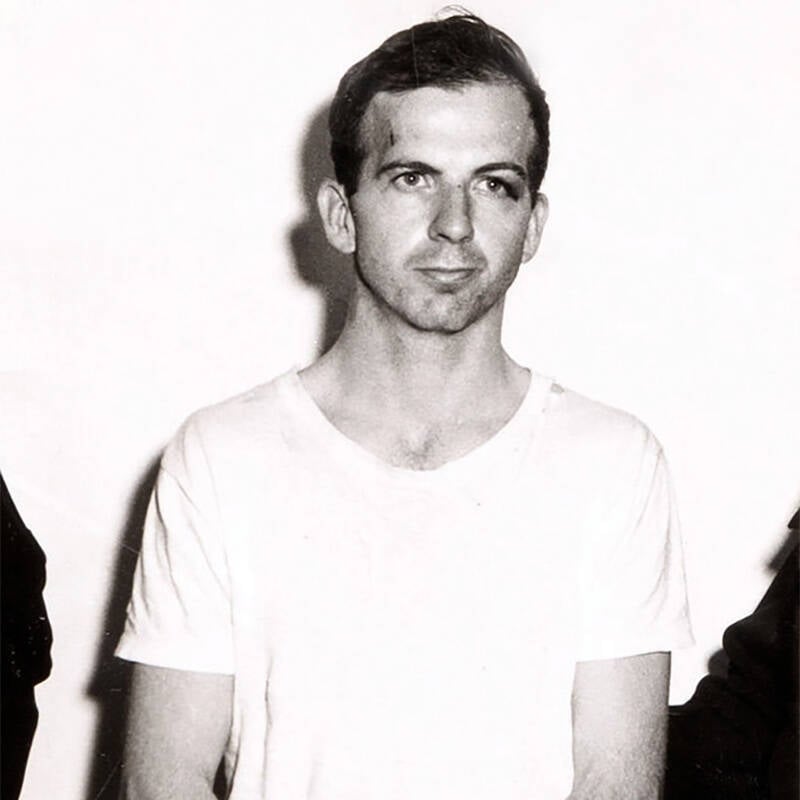
Dallas Police DepartmentLee Harvey Oswald, following his arrest in Dallas after the assassination of President John Kennedy.
As countless other J.F.K. conspiracy theories have pointed out, there are strange connections between the purported assassination plot and Cuba. Lee Harvey Oswald, the officially recognized assassin of J.F.K., visited Mexico City in the weeks before the murder, purportedly meeting with foreign agents—possibly Cuban or Soviet.
Jack Ruby, the Dallas night club owner who killed Oswald before he could testify further, was also investigated for his activities on the island, including a visit in 1959.
In the years following Watergate, Congress would call Hunt to answer specific charges as to his own involvement or the C.I.A.’s involvement in killing Kennedy, either out of revenge for the Bay of Pigs or as part of a larger conspiracy.
One woman, a former girlfriend of Hunt associate Frank Sturgis, claimed the two men had approached her about killing Castro, and hinted that they had been up to something big in Dallas just before Kennedy’s death.
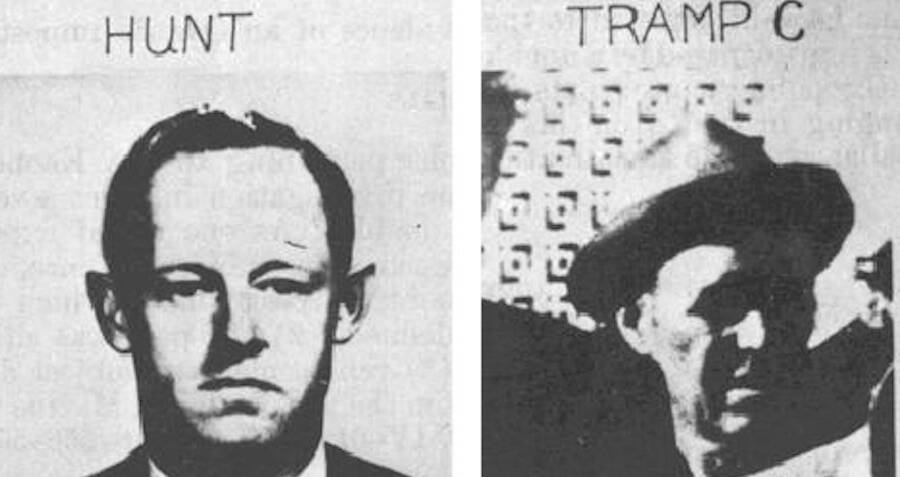
Wikimedia Commons.A Comparison of E. Howard Hunt and “Tramp C” arrested in Dallas, November 22, 1962.
Hunt stated that he knew nothing, but investigators took the time to compare the faces of both Hunt and his Watergate associate Frank Sturgis against several so-called “tramps” who were arrested in Dallas at the time of the assassination. According to Saint John Hunt, it is his father’s facial similarity to one of these tramps that forced him to get the “truth” from his father.
According to the diagram Hunt drew, Lyndon B. Johnson — a man who he described as having a “maniacal desire” for the Presidency — hated the Kennedys and laid a trap for the president with the help of the mafia and the C.I.A., both of whom had lost quite a lot in Cuba. These connections had given Johnson access to a “French gunman” on the Grassy Knoll, indicating Hunt’s belief that even if Oswald shot Kennedy, he was not the only gunman in Dallas that day.
As for his own involvement, Hunt conveniently claimed he was approached about the conspiracy and was forever thankful he had declined. According to Saint John, he always felt that his father was teasing him, telling him just a piece of the larger true story. If that story existed or is true, however, Hunt took the rest of it to his grave.
Last Words and Lingering Questions
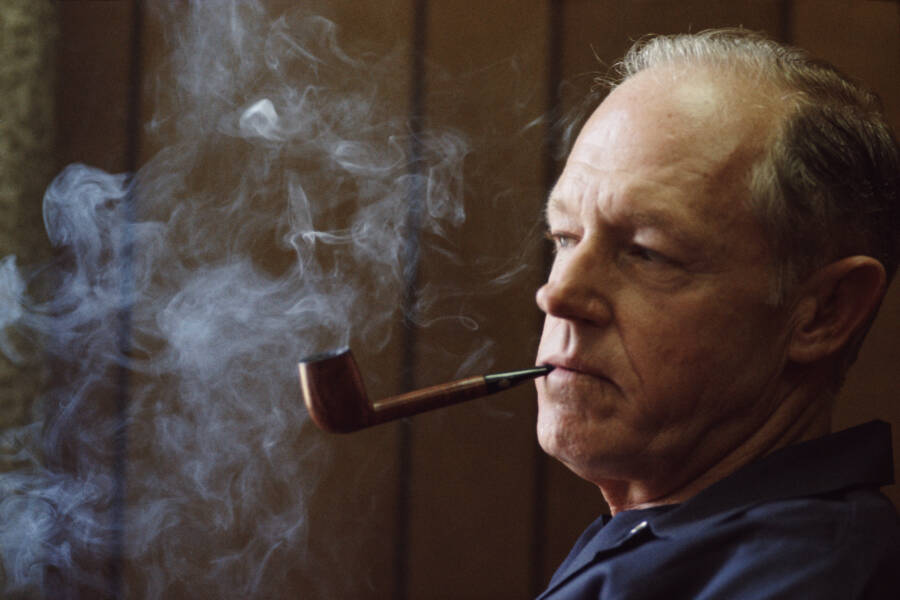
Michael Brennan/Getty ImagesAmerican intelligence officer and writer E Howard Hunt during his imprisonment at the Federal Prison Camp at Eglin Air Force Base, Florida, 1978. Hunt was convicted of conspiracy for his part in the Watergate scandal during his service with the C.I.A.
Soon after their 2003 meeting, Hunt and his second wife demanded the diagram and other notes back. Saint returned them after making copies. In 2007, just before his death, E. Howard Hunt published an authorized autobiography American Spy which author Tim Weiner, writer of Legacy of Ashes: The History of the CIA called, “a double-barreled misrepresentation,” that pretends to be a secret history.
As if in answer to this criticism, following Hunt’s death, Saint took his father’s supposed story public. Some, like the Los Angeles Times, found the story and its evidence “inconclusive”. Others found the accusation ludicrous. There were even those who felt Hunt was too convenient a mouthpiece for too obvious of a conspiracy.
Still, according to his son, his father was “an old-fashioned patriot,” who would not make up such an inflammatory accusation against his own country. As with most things in the life of E. Howard Hunt, the line between truth and fiction can be hard to distinguish.
In hindsight, it’s unclear if he was a writer who became the kind of spy he’d always dreamed of being or if he had more stories in him than he did real successes. In some sense, that might even be both how he wanted to leave things and how he needed them to be.
Faced with the reality of wasted talent, intelligence services, and a life left in shambles, that final mystery might have been the most valuable thing Hunt had to leave behind.
Now that you’ve learned about E. Howard Hunt, you might also enjoy learning about what J.F.K.’s ex-mistress might have known about his assassination. If you are interested in other possible accomplices, read our coverage of the mysterious Umbrella Man who may have signaled the fatal shots.
